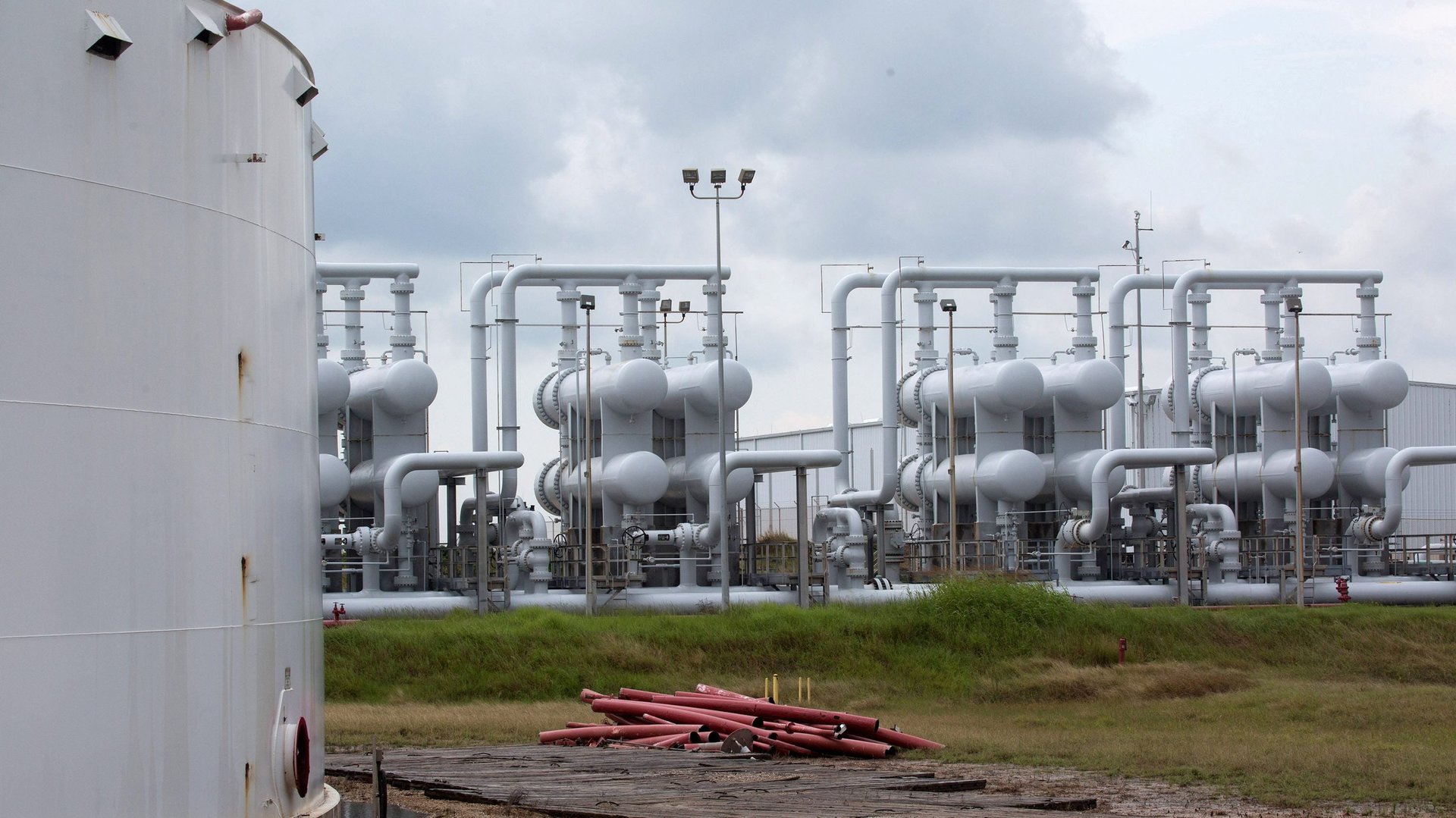The US is releasing its oil reserves. How will the Saudis and Russians respond?
US president Joe Biden announced today (Nov. 23) that the Department of Energy will release 50 million barrels of oil from its Strategic Petroleum Reserve in an effort to tamp down rising gas prices. It’s one of the largest-ever releases from the reserve, which is typically used to calm markets during moments of crisis driven by events such as war or climate disasters.


US president Joe Biden announced today (Nov. 23) that the Department of Energy will release 50 million barrels of oil from its Strategic Petroleum Reserve in an effort to tamp down rising gas prices. It’s one of the largest-ever releases from the reserve, which is typically used to calm markets during moments of crisis driven by events such as war or climate disasters.
The decision comes as US consumer sentiment is falling in part over rising US gas prices, which currently average $3.40 a gallon, compared to $2.11 at this same time last year. It also has geopolitical implications, as delegates from the Organization of the Petroleum Exporting Countries Plus (OPEC+)—the body of major oil-exporting nations including Saudi Arabia and Russia—have said they may respond to the US move by canceling plans to boost production from their own reserves.
How the US plan will work
The US will release 50 million barrels of oil from the SPR over several months in conjunction with several major energy consuming nations, including China, India, Japan, South Korea, and the UK. It’s significant that China and India signed onto the coordinated release, says Jeff Colgan, an associate professor of political science and international and public affairs at Brown University, given that neither nation is a member of the International Energy Agency, which had for years tried to spearhead such efforts.
“I think this shows that oil consumers will work together in response to what oil exporters are doing,” Colgan told Quartz. “That means oil consumers all over the world, even when they’re not politically aligned on other issues.”
Still, the other countries pledged to release smaller quantities of oil than energy traders had hoped for. India said it would release 5 million barrels, while China reportedly pledged a relatively small contribution in the range of 7 to 15 million barrels. Oil prices rose to a one-week high on news of the coordinated release, leading analyst Patrick De Haan to predict the deal could actually be negative on the long-term. The lower-than-expected pledges by other countries, coupled with news that OPEC and its allies may reverse course on increasing production, seems to have caused oil futures to rise.
What the SPR release means for OPEC+
Fundamentally, Colgan sees the SPR release as “a reflection of the strained relationship between the US and Saudi Arabia.” In previous years, says Colgan, the US may have been able to ask the Saudis to pump a bit more oil to stabilize the market. Given current tensions between the two countries over human rights issues such as the killing of journalist Jamal Khashoggi and Saudi Arabia’s role in Yemen, though, country officials haven’t been as inclined to cooperate as the US struggles with high gas prices.
OPEC+ delegates have said the SPR release is not justified given current market conditions and may reassess plans to increase oil production next month in light of the US strategic release, according to an S&P Global analysis.
Colgan says the response to the strategic release won’t be driven so much by OPEC+—which only has so much power over its member states—but rather by major oil exporting countries within the body. He said he expects Saudi Arabia to weigh short-term profits against the tensions put on consumer country economies when deciding how to respond. Russia, the other top oil exporting country after Saudi Arabia, is unlikely to be swayed by US pressure, Colgan adds.
“Ultimately the oil-producing countries want us to stay addicted to oil, so they don’t want to price to be too high,” Colgan says. “But at the moment I think they’ve sent repeated signals that they’re comfortable with prices in this range. So they may not back down.”